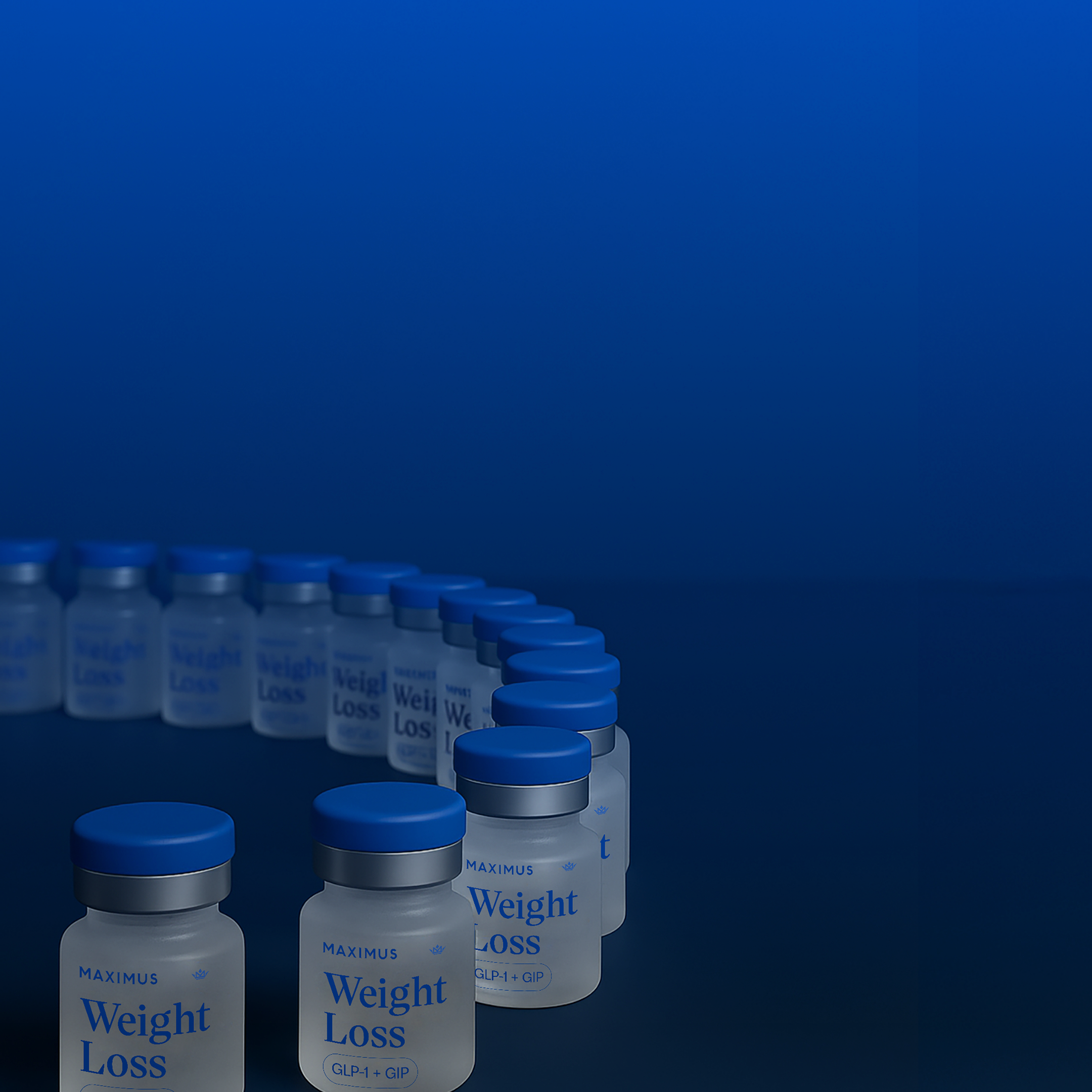Reviewed by Starling Krentz, MS and Gabriel Alizaidy, MD, MS
Q: What is Oxytocin Calming Cream and how does it work?
Oxytocin (often called the "love hormone") is naturally produced by your body during positive social interactions, intimacy, and moments of calm. Most absorption happens in the first two hours, while forming a dermal reservoir that continues releasing oxytocin for 12-16 hours. This steady delivery helps reduce stress, improve sleep, and enhance overall mood throughout your day or night.
Q: Is Oxytocin Calming Cream similar to Oxycontin?
No. Despite the similar-sounding name, oxytocin and oxycodone are completely different substances. Oxycodone (also known as Oxycontin) is an opioid pain medication that can be addictive. Oxytocin is a naturally occurring hormone your body produces during bonding, intimacy, and calm moments. It's not a controlled substance, has no addiction potential, and works by supporting your natural stress and mood regulation systems.
Q: Will Oxytocin Calming Cream help with sleep?
Absolutely. This is one of the most consistent benefits users report. The cream helps you fall asleep faster, stay asleep through the night without middle-of-the-night wake-ups, and wake up feeling refreshed (all without next-day fog or grogginess). Users report up to 25 minutes of extra sleep. The sustained 12-16 hour release means you get support throughout the entire night.
Q: What about mood and stress benefits?
This is where Oxytocin Calming Cream really shines. Users consistently report feeling calmer, more grounded, and better able to handle daily stress. You're not numb or checked out (challenging feelings still arise) but it's easier to return to baseline without getting stuck in negativity or spiraling. Many describe enhanced empathy, deeper eye contact, and more satisfying social interactions. It boosts your overall sense of wellbeing and happiness without dependency risks or side effects common to other medications.
Q: Can it improve intimacy and libido?
Yes. Multiple trial participants reported stronger attraction, enhanced orgasm intensity, and deeper emotional connection during intimate moments. It won't replace the physical blood flow benefits of PDE5 inhibitors like tadalafil, but it adds a relational and emotional dimension that makes intimacy more satisfying. Some users specifically mention scrotal or perineal application for this purpose, with partner consent.
Q: How long before I see benefits?
Many people feel the calming effects within an hour or two of application. You might notice reduced stress, a warmer mood, or feeling more present and grounded almost immediately. Sleep improvements often appear within the first few nights (deeper rest, fewer middle-of-the-night wake-ups, waking more refreshed). Longer-term benefits like enhanced empathy, stronger social connections, and cumulative stress resilience build over the first few weeks. You get both immediate relief and compound effects over time.
Q: Will I feel 'high' or altered when using Oxytocin Calming Cream?
No. The effects are subtle and natural, not intoxicating. You won't feel impaired or "out of it." Instead, you'll likely notice a gentle sense of calm, warmth, and emotional balance. It's more like feeling like your best self rather than feeling altered or drugged. You can go about your day normally while experiencing the benefits.
Q: Should I cycle Oxytocin Calming Cream or use it long-term?
Oxytocin Calming Cream can be used long-term without cycling. Studies from other forms of exogenous oxytocin, some with even higher concentrations, haven't shown shutdown, negative feedback, or receptor desensitization. There's no dependency effect or suppression of your natural oxytocin production. Continuous daily use is common and well-tolerated.
Q: When should I apply Oxytocin Calming Cream?
The beauty of the 12-16 hour sustained release is flexibility. Apply it an hour before stress-inducing events for acute support. For all-day calm and emotional balance, apply in the morning. For restful sleep and overnight benefits, apply in the evening. Many users find that the evening application works best because it supports both falling asleep faster and staying asleep through the night, then carries benefits into the next day.
Q: Where should I apply Oxytocin Calming Cream for best results?
Apply to clean, dry skin on areas with good blood flow (inner arms, inner thighs, perineum, or scrotum work well). Thin-skinned areas absorb best. Allow the cream to fully absorb and wait 2 hours before showering or exercising to ensure optimal uptake. Some users report enhanced intimacy benefits with scrotal or perineal application. Rotate sites if you prefer, but consistency matters more than location.
Q: What's the standard dosage?
The trial used 1000 IU per day, which translates to one click (0.25 ml) from the pump dispenser. This volume makes it easy to apply to areas like the inner arm, inner thigh, perineum, or scrotum.
Q: Does Oxytocin Calming Cream cause tolerance or dependency?
No. Unlike many medications used for mood or sleep, there's no tolerance buildup or dependency risk with Oxytocin Calming Cream. Studies indicate no tolerance development with other forms of oxytocin as well. You're using bioidentical oxytocin (the same molecule your body naturally produces) delivered in a way that enhances rather than replaces your body's own systems. You can use it consistently without worrying about needing higher doses over time or experiencing withdrawal if you stop.
Q: Can I use Oxytocin Calming Cream with sleep medications?
Talk to your provider before combining oxytocin with other sleep medications. While oxytocin itself doesn't have the dependency risks of many sleep aids, your provider can help you determine the best approach for your specific situation and medications.
Q: Who should not use Oxytocin Calming Cream?
Oxytocin should not be used during pregnancy. While the risks are mostly linked to IV oxytocin, we keep safety in mind and avoid use during pregnancy out of caution. People with heart failure, chronic kidney disease, low sodium levels, or conditions that affect fluid balance should consult their provider before using.
Q: Can I combine Oxytocin Calming Cream with my current protocol (testosterone, enclomiphene, tadalafil, etc.)?
Absolutely. Oxytocin Calming Cream complements rather than interferes with other treatments. While your testosterone protocol handles virility and muscle, and tadalafil covers blood flow, oxytocin adds mental resilience, stress reduction, and emotional balance. Users on comprehensive hormone optimization stacks report no conflicts (just added benefits that round out their overall wellbeing).
Q: Can I apply topical testosterone and Oxytocin Calming Cream at the same time?
Yes. You can apply them at the same time to different areas. For example, apply testosterone to the scrotum and oxytocin to the perineum, or vice versa. You can also space them out (testosterone in the morning, oxytocin in the evening) if you prefer. The lower volume of Oxytocin Calming Cream (0.25 ml per dose) makes it easy to use different application sites. Just allow each product to fully absorb, and wait 2 hours before showering after applying oxytocin.
----
Disclaimer: The contents of this article, including, but not limited to, text, graphics, images, and other information, is for information purposes only and does not constitute medical advice. The information contained herein is not a substitute for and should never be relied upon for professional medical advice. The content is not meant to be complete or exhaustive or to be applicable to any specific individual's medical condition. You should consult a licensed healthcare professional before starting any health protocol and seek the advice of your physician or other medical professional if you have questions or concerns about a medical condition. Always talk to your doctor about the risks and benefits of any treatment. Never disregard or delay seeking professional medical advice or treatment because of something you have read on this site. Maximus does not recommend, endorse, or make any representation about the efficacy, appropriateness, or suitability of any specific test, products, procedures, treatments, services, opinions, healthcare providers or other information contained herein. Maximus is not responsible for, nor will they bear any liability for, the content provided herein or any actions or outcomes resulting from or related to its use.





